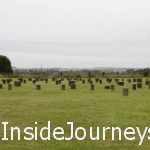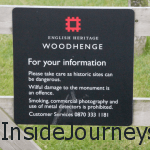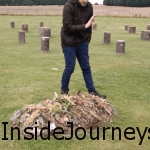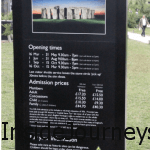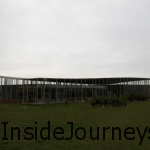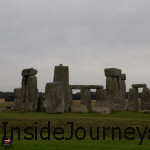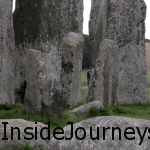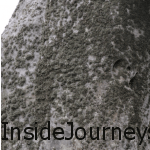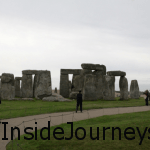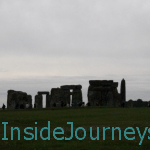I didn’t plan to return to Stonehenge – the Neolithic stone circle located on the Salisbury Plain in Wiltshire. I’d been there only a few years ago, in 2011, to be exact. It was during that tour that I heard about Avebury.
If you like Stonehenge and have time, the guide said, you should visit Avebury. It’s quite impressive!
I was intrigued. I couldn’t imagine anything more impressive than Stonehenge. If Avebury is that impressive, I thought, why hadn’t I heard about it?
Disappointed because I was leaving London the following day, I promised that I would visit Avebury on my next trip. I started looking for a tour as soon as I knew I was going. Since all the tours I found included Stonehenge, I concluded that it’d be good to experience both.
So early one morning in August, I boarded a small tour bus with our guide, Edward, an archeologist from Tours from Antiquity, and about 15 others for a day-long tour of Durrington Walls, Stonehenge, Bath, Silbury Hills and Avebury.
It’s clear now why the tours to Avebury include Stonehenge and I’m glad that I saw them both on the same day. With only a few miles separating them, seeing these sites together makes it easier to understand the context and appreciate their connection.
Durrington Walls
Our first stop was Durrington Walls. Located about 2 miles from Stonehenge, it is the area where the builders of Stonehenge lived. They were hunter-gatherers who lived in thatched huts and moved around the landscape hunting red deer, wild boar, and aurochs (wild cattle, now extinct).
They’d gather in the thousands in the Durrington Walls area for the winter and summer solstices. Tests done on animal bones found there suggest the animals, some of which came from as far away as Scotland, were killed at about 9 months.
Woodhenge
Located in Durrington, about 1000 yards from Stonehenge, Woodhenge is a six-ring wooden circle that was discovered in 1925. It was built about the same time as Stonehenge and has a similar layout but it is still unclear how the site was used. The posts were of different sizes, with those in the largest ring up to 30 feet (9 m) high. Some of the posts were aligned to the direction of the summer sunrise and the winter sunset. A ditch enclosed the site, making it a true henge.
The site was excavated by Maud Cunnington who discovered the remains of a 3 or 4-year old child (a cairn marks the spot), who Cunnington interpreted as having been sacrificed. However, scientists have not been able to analyze the remains as they were destroyed when the museum in which they were being held was bombed during World War II. Also found buried among the posts were pottery, tools made of flint, carved chalk objects, and other items of everyday use.
Stonehenge
Stonehenge has changed since my first visit. Now a sprawling new £27,000,000 (about $40,000,000) Visitor Center, a gift shop, a small museum and a replica of a prehistoric village, anchor the site. Visitors are ferried 1 1/2 miles by buses from the Visitor Center to the site of the circle.
The stones were straight ahead as we arrived at the drop-off point and with people already milling around, it was striking how small they looked in comparison to the size of the stones.
Even though I’ve seen them before, the stones were impressive. I’m happy I visited when I did and that I was able to go inside the circle as access is now restricted, the site now roped off.
A few things to know:
- Although it’s called Stonehenge, strictly speaking, it isn’t a henge. A henge is a stone or wooden circle with a ditch on the inside. The ditch at Stonehenge is on the outside. Woodhenge and Avebury are true henges.
- Archeologists believe Stonehenge was created around 3000 BC.
- Stonehenge was a burial site.
- Stonehenge is made up of two circles – an inner circle of smaller bluestones, which weigh about 4 tons and came from the Preseli Hills, 150 miles away in Western Wales, and an outer circle of sarsen stones that weight approximately 50 tons.
- Trillithons is a structure created by two large vertical stones topped by a horizontal stone (a lintel). The lintels are secured ‘Lego-like’.
- Stonehenge and Avebury were named World Heritage sites in 1986.
- There is a £5,000 fine for trespassing.
Stonehenge Travel Essentials
Hours
Mar 16 – May 31 9:30 a.m. to 7:00 p.m.
Jun 1 – Aug 31 9:00 a.m. to 8:00 p.m.
Sept 1 – Oct 15 9:30 a.m. to 7:00 p.m.
Oct 16 – Mar 15 9:30 a.m. to 5:00 p.m.
** Last admission – 2 hours before close
Admission Price:
Adults (Free for members of English Heritage) £15.50 / $23.93
Children (5-15 years) £9.30 / $14.36
Family (2 adults, 3 children) £40.30 / $62.22

